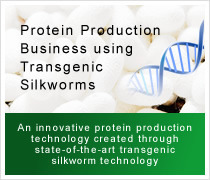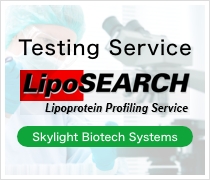IBL News
Product News
- Product News2025/11/19
- 【New research article】The Cholesterol-Lowering Effect of Exendin-4, a GLP-1 Receptor Agonist
 IBL products introduced in this IBL news are applicable for research use only and cannot be used for diagnostic or medical purposes.
IBL products introduced in this IBL news are applicable for research use only and cannot be used for diagnostic or medical purposes.A research group led by Dr. Mika Hori, Lecturer in the Department of Endocrinology, Research Institute of Environmental Medicine, Nagoya University, and Dr. Yukiko Hasegawa, Division of Diabetology and Metabolism, Department of Internal Medicine, Tokyo Women’s Medical University School of Medicine, reported the mechanism by which exendin-4, a GLP-1 (glucagon-like peptide-1) receptor agonist, acutely lowers blood cholesterol.
GLP-1 receptor agonists are drugs that mimic the action of GLP-1, an incretin hormone that regulates blood glucose levels. They are known to act on the pancreas to regulate insulin and glucagon secretion, and they also act on the gastrointestinal tract and central nervous system to control satiety and appetite.
On the other hand, the authors of this paper have previously reported that a GLP-1 receptor agonist lowers blood cholesterol levels in patients with type 2 diabetes.
This study evaluated the effects of administering exendin-4 for five days to Ldlr−/− mice (LDL receptor–deficient mice) and C57BL/6J mice, assessing changes in serum lipoprotein profiles, expression levels of cholesterol metabolism–related genes, and alterations in protein levels. Through these analyses, the authors elucidated whether the LDL receptor contributes to the cholesterol-lowering effects of exendin-4 and investigated the presence of LDL receptor–independent mechanisms.
■ Major findings
The effects of exendin-4 observed in Ldlr−/− mice and C57BL/6J mice are as follows:
1) Effects observed in both mouse strains
・ Reduction in serum very low-density lipoprotein cholesterol (VLDL-C) and low-density lipoprotein cholesterol (LDL-C)
・ Decrease in mature SREBP2, a key transcription factor for cholesterol synthesis in the liver
・ Increase in hepatic mRNA expression of INSIG*1 and INSIG*2, which suppress SREBP2 activation
2) Effects specific to Ldlr−/− mice
・ Decrease in hepatic cholesterol levels
・ Reduction in bile acid excretion in feces
・ Decrease in hepatic Cyp7a1*3 mRNA expression
・ Increase in small intestinal Fgf15*4 mRNA expression
3) Effects specific to C57BL/6J mice
・ Decrease in NPC1L1*5 protein, which is involved in intestinal cholesterol absorption
Thus, reductions in VLDL-C and LDL-C were observed in both Ldlr−/− and C57BL/6J mouse strains, indicating that exendin-4 regulates serum cholesterol independently of the LDL receptor. Furthermore, it was suggested that cholesterol absorption may be suppressed through different mechanisms in each mouse strain.
This study provides important findings, indicating that GLP-1 receptor agonists could represent a potential new treatment option for patients with dyslipidemia associated with LDL receptor dysfunction.
Please refer to the following publication for more details.
Mika Hori et al. Acute Cholesterol-Lowering Effect of Exendin-4 in Ldlr-/- and C57BL/6J Mice
J Atheroscler Thromb. 2023; 30:74-86.
This paper utilizes our LipoSEARCH® service to analyze lipoprotein and lipid profiles using the GP-HPLC method.
We offer a wide variety of ELISA kits for the determination of incretins.
Click here for more details.
Footnotes
*1. INSIG1 (Insulin-induced gene 1)
INSIG1 binds to SCAP in the endoplasmic reticulum, blocking SREBP activation and thereby suppressing the transcription of lipid synthesis genes. It also cooperates with E3 ubiquitin ligases to promote HMGCR ubiquitination and degradation, which inhibits cholesterol synthesis.
*2. INSIG2 (Insulin-induced gene 2)
INSIG2 binds to SCAP in the endoplasmic reticulum, blocking the transport of the SREBP/SCAP complex to the Golgi and thereby suppressing lipid synthesis. It is highly expressed in the liver, and its expression is induced by PPARα during fasting. Oxidized sterols enhance its binding to SCAP, thereby suppressing SREBP activity.
*3. CYP7A1 (Cholesterol 7α-hydroxylase)
CYP7A1 is the rate-limiting enzyme that converts cholesterol to bile acids in the liver, contributing to cholesterol metabolism and excretion. FXR, a nuclear receptor in the small intestine activated by bile acids, induces FGF15/19, which suppresses Cyp7a1 transcription in the liver, thereby maintaining bile acid homeostasis.
*4. FGF15 (Fibroblast Growth Factor 15)
FGF15 is induced in the small intestine via FXR activation by bile acids and suppresses Cyp7a1 transcription in the liver. It mediates the negative feedback regulation of bile acid synthesis and also contributes to the regulation of lipid and glucose metabolism via the FGFR4 pathway.
*5. NPC1L1 (Niemann-Pick C1-Like 1)
NPC1L1 is involved in the absorption of dietary and bile-derived cholesterol in the small intestine. In the liver, it is implicated in the reuptake of cholesterol from bile. Ezetimibe inhibits NPC1L1, thereby lowering blood LDL cholesterol levels.
We hope this information will be useful for your research.
Please feel free to contact us.
Sales Department
Antibody related Business Division
Immuno-Biological Laboratories Co., Ltd.
Email: do-ibl@ibl-japan.co.jp

IBL-Japan (Specific Antibody Development) 30sec video
IBL-Japan (Specific Antibody Development) 2min video
LipoSEARCH® - Lipoprotein Analyzing Systems (Patented GP-HPLC Systems) 30sec video
















